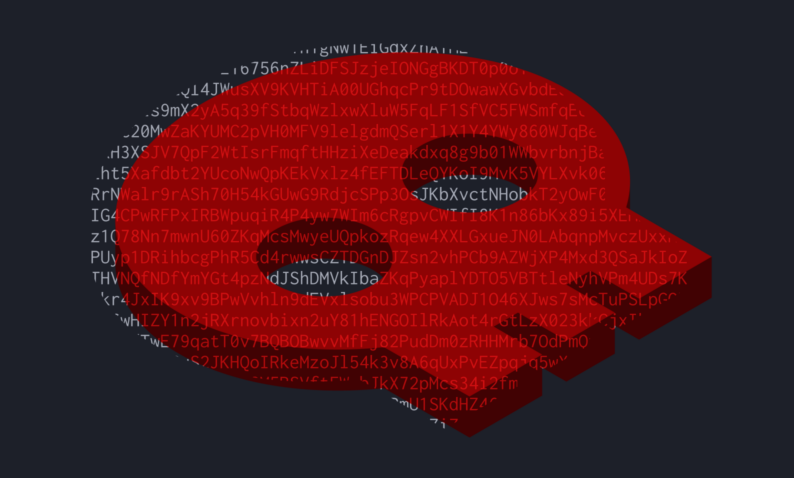
Get Started
Graphite's supplier management tool helps you onboard faster, cut time on risk reviews and streamline supplier validations. Save time and money.
June 20 2024
The Illicit Industry of the Dark Web: A Hidden Economy of Data Theft, Ransom, and Fraud
The dark web, a concealed portion of the internet accessible only through specific browsers like Tor, has earned a notorious reputation as a hub for illicit activities. Among these, the theft of data, ransom demands, sale of credentials, and fraud stand out as significant criminal enterprises. This hidden economy thrives in the shadows, posing a persistent threat to individuals, corporations, and governments worldwide.
Data Theft: The Foundation of Dark Web Crime
Data theft is the cornerstone of many dark web operations. Cybercriminals employ various techniques, such as phishing, malware, and hacking, to infiltrate systems and exfiltrate sensitive information. Once stolen, this data—ranging from personal identification details to financial records and proprietary corporate information—is sold on dark web marketplaces.
These stolen data packets are often auctioned to the highest bidder or sold at a fixed price, depending on their perceived value. For instance, credit card information might fetch a few dollars per card, while comprehensive data sets, including Social Security numbers, bank account details, and health records, can command significantly higher prices.
Ransomware: Holding Data Hostage
Ransomware attacks have surged in frequency and sophistication, becoming a favored tactic among cybercriminals. In these attacks, malicious software encrypts the victim’s data, rendering it inaccessible. The attackers then demand a ransom, typically in cryptocurrency, to provide the decryption key.
High-profile ransomware attacks have targeted hospitals, educational institutions, and critical infrastructure, causing significant operational disruptions. The anonymity provided by the dark web allows attackers to evade law enforcement while facilitating the ransom payment process. Ransomware-as-a-Service (RaaS) has also emerged, enabling even non-technical criminals to launch attacks by purchasing or renting ransomware tools from skilled developers.
Sale of Credentials: A Lucrative Market
The dark web is a bustling marketplace for stolen credentials. Usernames and passwords for various online services, including email accounts, social media, and subscription services, are readily available for purchase. These credentials are often used for credential stuffing attacks, where attackers attempt to gain unauthorized access to multiple accounts by leveraging reused passwords.
Corporate credentials are particularly valuable, as they can provide access to sensitive business information and internal systems. Cybercriminals exploit these credentials for corporate espionage, data breaches, or to launch further attacks within the compromised network.
Fraud: A Multibillion-Dollar Industry
Fraud on the dark web encompasses a wide range of activities, including identity theft, financial fraud, and counterfeit goods. Identity theft involves using stolen personal information to create fake identities or to commit fraud in the victim’s name. This can lead to significant financial losses and long-lasting damage to the victim’s credit and reputation.
Financial fraud schemes often involve the use of stolen credit card information to make unauthorized purchases or to create cloned cards. Additionally, counterfeit goods—ranging from fake currency to forged documents and fake luxury items—are commonly traded on dark web marketplaces. These fraudulent activities not only harm consumers but also undermine legitimate businesses.
The Fight Against Dark Web Crime
Combating dark web crime requires a multifaceted approach involving law enforcement, cybersecurity professionals, and international cooperation. Efforts to dismantle dark web marketplaces, such as the shutdown of Silk Road and AlphaBay, have disrupted criminal activities but often lead to the emergence of new platforms.
Advanced cybersecurity measures, including robust encryption, multi-factor authentication, and continuous monitoring, are essential for protecting data and preventing breaches. Public awareness campaigns also play a crucial role in educating individuals and organizations about the risks of cybercrime and the importance of cybersecurity best practices.
Conclusion
The dark web’s illicit industry, driven by data theft, ransom, sale of credentials, and fraud, represents a complex and evolving threat landscape. As cybercriminals continue to innovate and adapt, the fight against these dark web activities must be relentless and adaptive. By understanding the mechanisms and motivations behind these crimes, society can better defend against the pervasive and often invisible dangers lurking in the digital shadows.